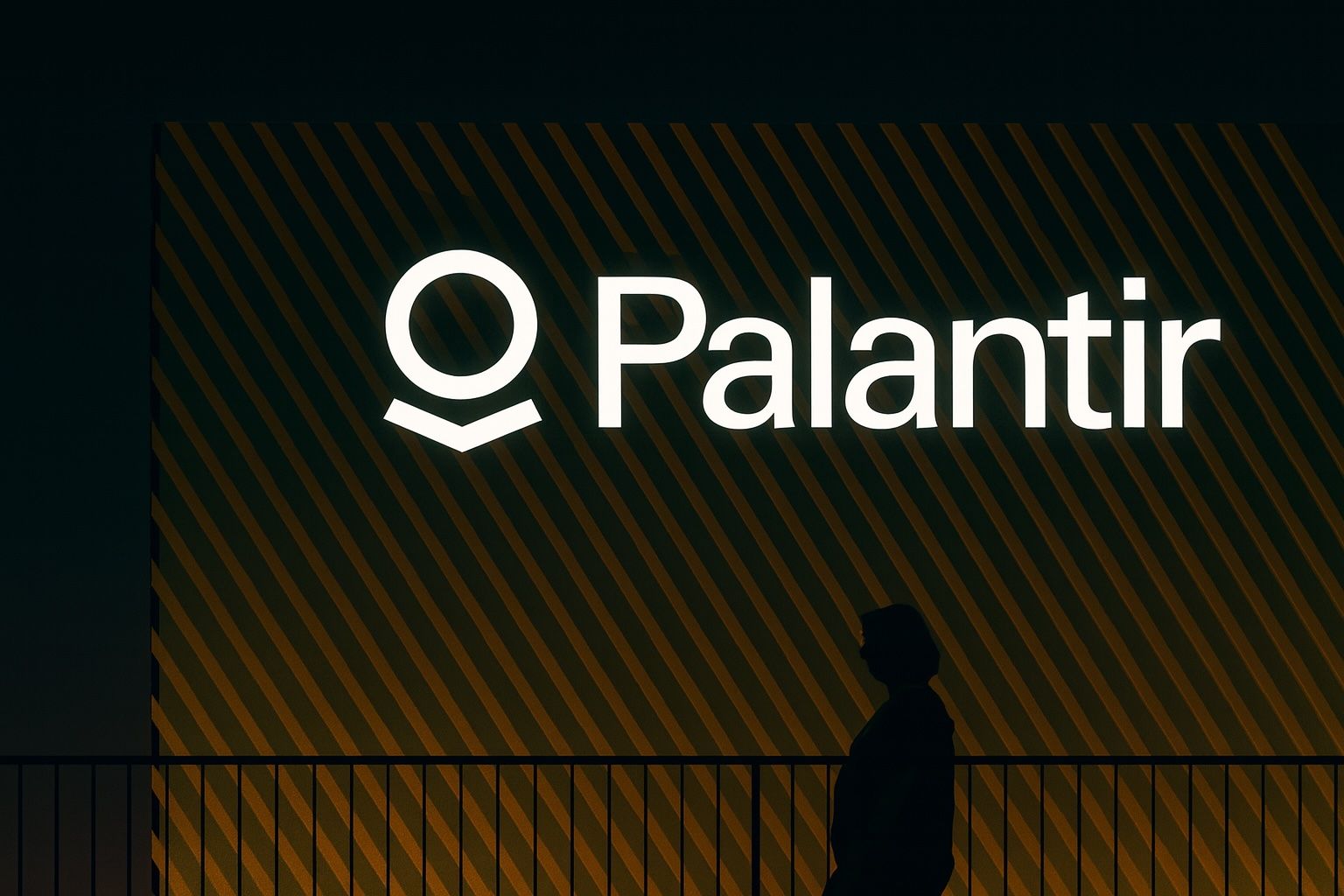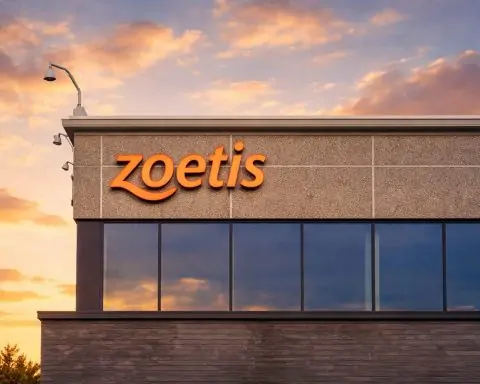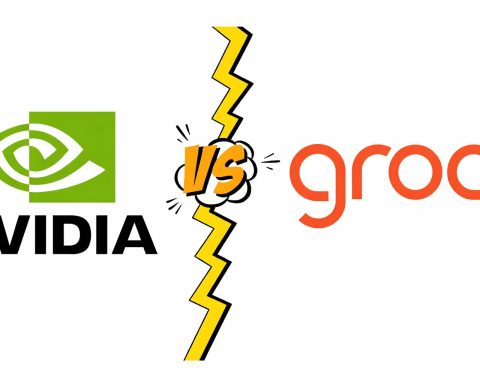- Midday Price (Oct 3, 2025): PLTR opened around $186.40 and is trading near $184–185 (down ~1.4% today). Despite today’s pullback, Palantir remains well above last year’s levels – the stock had more than doubled YTD by mid-2025.
- Boeing Partnership: On Sept 23, Boeing Defense & Space announced it will integrate Palantir’s AI/data platform across its operations. Boeing’s defense chief called this “game-changing,” saying it lets them make decisions “not in weeks, but in days and hours”. PLTR shares jumped ~2% on the news.
- Recent Earnings/Guidance: In early August 2025 Palantir reported record Q2 results – roughly $1.00 billion in revenue (up ~48% YoY). The company raised full-year revenue guidance to about $4.14–4.15 billion as government and commercial demand stayed strong.
- Analyst Views: Analysts are split. Some (e.g. Wedbush’s Dan Ives) remain bullish on PLTR’s AI prospects [1], while others warn of lofty valuation. Price targets range widely – from as low as $45 to as high as $215. The consensus (hold) target is around $125–$140, implying modest upside. BofA lifted its 12-month target to $215 on Sept 23.
- Peer Comparisons: Palantir has far outpaced some AI/software peers. By August it was up ~148% YTD, whereas C3.ai (stock “AI”) was down ~51%. Snowflake (SNOW) also had a strong Q2 – SNOW rose ~20% after a blowout quarter, prompting Piper Sandler to raise its target to ~$285.
- Market Sentiment: Social/trading buzz is intense. In mid-August PLTR was the top-trending ticker on StockTwits even as a Citron short report drove a selloff. Citron’s Andrew Left called the stock “overvalued” (suggesting a rational value $65–$70). As of late Aug, social sentiment scores were low (bearish) but message volume was high.
Stock Performance Today (Oct 3, 2025)
PLTR began today’s session near the previous day’s close (around $186) and slipped modestly in morning trading. As of 9:48 AM ET on Oct 3, it was about $184.50 (–1.36%). The stock remains close to its all-time highs; analysts note PLTR was trading near $185 just before today’s dip. Trading volume has been elevated, reflecting heavy investor interest after last week’s news. (By comparison, the S&P 500 was barely changed at mid-morning.)
Notably, Palantir is still enjoying a massive rally over the past year. As of mid-2025 it had more than doubled in value (up roughly +110% YTD by August, and later reports showed it had climbed ~148% YTD). In technical terms, the stock has retraced some of its early-2025 gains: chart indicators like the RSI have cooled off from extreme levels. One chart-watcher notes PLTR’s RSI fell below neutral, and price is approaching the 50-day moving average (~$152) – a level that could provide short-term support.
Recent News & Developments
Palantir’s share price has been driven by a string of news in recent months:
- Q2 Earnings (Aug 4, 2025): Palantir delivered its first $1-billion quarter, with revenue up 48% year-over-year. U.S. government sales accounted for about 42% of Q2 revenue. Management raised full-year revenue guidance to $4.142–4.150 billion, reflecting stronger-than-expected demand. Following the report, analysts noted both government and commercial segments were “accelerants on both sides” of growth.
- U.S. Army Contract (July 2025): In late July, the U.S. Army announced it was consolidating dozens of contracts into a single enterprise deal with Palantir, effectively giving the Army volume discounts and an option to purchase up to $10 billion in services over 10 years. (This deal does not commit the Army to spend, but it signals deepening Pentagon reliance on Palantir’s tools.)
- Boeing Defense Tie-Up (Sept 23, 2025): Boeing’s Defense, Space & Security unit said it will use Palantir’s AI platform across its production lines. The deal is intended to standardize data analytics at Boeing and include AI tools for classified programs. Boeing Defense CEO Steve Parker hailed the partnership’s “game-changing capabilities”, noting it lets Boeing “make decisions not in weeks, but in days and hours” by harnessing AI data synthesis. Palantir stock jumped about 2% on this news.
- Nuclear Industry Partnership (June 26, 2025): Palantir teamed with a nuclear energy company to create an AI-driven “Nuclear Operating System” (NOS) for building reactors. Under the deal, the nuclear partner will pay ~$100 million over five years to develop software that speeds construction and lowers costs. This reflects renewed interest in nuclear power (backed by recent U.S. policy changes) and expands Palantir’s footprint into energy infrastructure.
- Army Communications Memo (Oct 3, 2025): Today, Reuters reported that an internal U.S. Army memo flagged “fundamental security” flaws in a new battlefield communications system built by Anduril and Palantir. The memo labeled the prototype “very high risk,” noting vulnerabilities (e.g. lack of access control and logging). The report was said to be part of standard security triage, but it did raise concerns among investors. (Palantir and Anduril did not comment.) News of the memo contributed to today’s modest pullback in PLTR shares.
Analyst Commentary & Forecasts
Wall Street analysts and experts remain divided on PLTR. Bullish investors point to Palantir’s fast growth and AI potential, while skeptics cite valuation and execution risk. For example:
- Dan Ives (Wedbush): A prominent tech bull, Ives has kept Palantir as a top pick. He likens the AI investment theme to an all-night party: “It was 9:00 p.m., it’s now 10:00 p.m., and it goes to 4:00 a.m.,” meaning the AI revolution (and tech rally) has a long way to run [2]. Ives reiterated a Buy rating on PLTR after Q2, calling the quarter a “blowout” and highlighting ongoing AI-driven demand [3].
- Gil Luria (DA Davidson): Luria emphasizes Palantir’s dual engines of growth, noting the company “has accelerants on both sides” – both government and commercial segments are firing. He rates PLTR as Neutral (Hold), acknowledging the momentum but cautious on near-term valuation.
- Andrew Left (Citron): The short-seller continues to publicly challenge Palantir. In August he went on record saying PLTR’s valuation is “absurd,” even suggesting a rational value of only ~$65–$70 per share. He argues Palantir’s market is limited (to defense/enterprise contracts) and growth is slow, in stark contrast to explosive AI peers. Left’s reports (and related tweets) have turned sentiment briefly bearish, although they have not stopped the long-term uptrend.
- Price Targets: Analysts’ 12-month targets vary widely. A Bank of America team (Mariana Perez Mora) maintained a Buy with a target up to $215 on Sept 23 (the high among current forecasts). Other recent targets range from sub-$100 to over $200. The average target among about 21 analysts is roughly $125–$140, implying limited upside from current levels. (MarketBeat reports a consensus “Hold” with average ~$140, while Benzinga notes a $125 consensus.)
Technical Outlook
Technically, PLTR’s chart shows it has climbed steeply all year but is in a short-term pullback. After rallying into late summer, the stock filled in an early-August gap and its RSI indicator cooled off. As of this week, the RSI has dipped back toward neutral, suggesting buyers have taken profits. The price is also nearing its 50-day moving average (around $150–$155), which could act as near-term support. In summary, the uptrend remains intact as long as PLTR holds above roughly the $150 level. A decisive break below recent support (mid-$140s) might concern chartists.
Partnerships, Products & Strategy
Palantir is increasingly penetrating new sectors beyond its original defense base (illustration). The company continues to land headline partnerships and roll out products:
- Boeing (Defense) Partnership: As noted above, Boeing’s defense arm will standardize on Palantir’s AI platform. This is a major endorsement – Boeing’s production lines (military aircraft, satellites, etc.) will now use Palantir’s data analytics. Boeing’s leader calls it transformative.
- Government Contracts: Palantir’s software is embedded in many government projects. In addition to the Army contract and communications program noted above, Palantir has deals with the Air Force, Navy, and intelligence agencies. Management has said it expects government-linked revenue to continue growing, especially with the new Trump administration focusing on defense spending.
- Civil & Commercial Growth: On the commercial side, Palantir is pushing into industries like automotive, healthcare, and finance. It uses a “land-and-expand” model (deploying teams to large clients, then expanding use) to grow. Recent deals include a UK defense partnership with Hadean (for virtual training) and expanded use of Foundry (its analytics platform) by companies like NHS and Fiat (for data management). These highlight a shift: Palantir is no longer just a “government contractor,” but also a vendor for corporate AI solutions.
- Product Developments: Palantir’s two main products, Foundry and AI Platform (AIP), are being enhanced. In September 2025, Palantir announced new features such as “AIP Evals” – an automatic test-case generator for AI logic functions [4] – making it easier for customers to build and validate AI models. Other Foundry updates improved data connectivity (e.g. proxy egress policies to bridge on-premise systems) [5]. These incremental improvements show Palantir is expanding its technology stack to stay ahead in enterprise AI.
- Strategy Outlook: CEO Alex Karp has often said Palantir will invest aggressively in R&D and hiring. Indeed, management has warned of higher expenses in the near term (for engineers and sales) even as revenue guidance climbs. The strategy seems to be: leverage its “sticky” platform (customers rarely switch) to capture big contracts (like Boeing and the Army) while also branching into commercial AI use cases. Investors will watch execution carefully – if Palantir can keep delivering new applications of its software (e.g. in aerospace, energy, finance) without overshooting costs, it could validate the hype.
Comparisons & Peers
Palantir sits at the intersection of data analytics, software-as-a-service, and artificial intelligence, so it’s often compared to other tech names:
- Snowflake (SNOW): Both companies operate in big data/AI, but Snowflake focuses on cloud data warehousing. Snowflake also reported strong results: in late Sept 2025 SNOW stock jumped ~20% after beating Q2 estimates and guiding above expectations. Snowflake’s revenue is growing fast (well over 60% YoY), but its model is recurring subscription, unlike Palantir’s high-touch contracts. Analysts generally view Snowflake as a more “pure” growth tech play; after its quarter, one team (Piper Sandler) set an $285 12-month target. In contrast, Palantir’s growth is lumpy and tied to big projects, so its valuation metrics (P/S, etc.) remain much higher (an average forward P/S of >110 for PLTR vs ~6 for C3.ai, for example).
- C3.ai (AI): C3.ai was once touted as a pure-play AI stock, but it has struggled. In early August C3.ai warned of a huge earnings miss (revenue 33% below guidance), sending its stock sharply lower. Investors see C3 as unable to sustain growth without major overhaul. By contrast, Futurum analysts note that Palantir has “mastered land-and-expand,” embedding its consultants and tech deeply in each customer. Palantir’s result beats (especially in Q2 2025) reinforced that narrative – C3’s lack of similar success highlights why their stocks diverged in 2025 (PLTR up ~148% YTD vs. C3 down ~51%).
- Other AI/Cloud Stocks: For context, other large AI-related names (e.g. Nvidia, Microsoft, Tesla) have also rallied as interest in AI has exploded. Many institutional tech funds have added PLTR alongside these names. At the same time, general market observers point out Palantir’s valuation is extreme: Citron noted its forward P/E is >210×, far above peers. This fuels debate – some see more upside if Palantir continues winning contracts, while others think any hiccup could trigger a sharp re-rating.
Market Sentiment & Social Buzz
Investor sentiment on Palantir is polarized. Bulls tout its unique position as an “AI defense” play, while bears cite the lofty valuation. On social media and forums:
- StockTwits/Reddit: PLTR often trends on retail platforms. For example, StockTwits reported PLTR was its top trending ticker in late August 2025, even as the stock slid during a Citron-induced selloff. Sentiment metrics were notably bearish at that time (about 31/100 on StockTwits), but chatter volumes were high. On Reddit, posts ranged from bullish (“$200 soon!”) to skeptical (“stick around, bubble pop?”). In recent weeks, the Boeing news turned chatter more positive.
- Analyst Polls: Surveys of analysts (reflected in the consensus targets above) show a “Hold” rating majority. TipRanks notes the median 12-month target is roughly $154 (only modestly above the recent price). These mixed inputs reinforce caution.
- Insider Activity: Observers are watching executive stock sales/buys. Some critics point out insiders have sold millions of dollars of stock after rallies, which they say undermines confidence. Management responds that stock grants are normal. We have no definitive data in sources here, but this topic came up in Citron’s report.
- Media & Analysts: Coverage has been intense. CNBC, Bloomberg, and financial sites have interviewed Palantir executives and analysts. CNN Money and Yahoo Finance recently highlighted Palantir’s $1B quarter and AI momentum. However, some outlets (CNBC’s Jim Cramer, etc.) have also warned about the “bubble” risk. Most expert commentary we saw (e.g. Wedbush, DA Davidson, Zacks) emphasizes both Palantir’s strong growth runway and the need to be mindful of valuation.
Overall, the buzz is that Palantir remains a glamour tech stock in the AI era: insiders and hedge funds took chips off the table after the big summer run, but newer investors (and many retail traders) are hopeful the next news flow (perhaps Q3 earnings in November) will re-ignite another leg up. If data/economic headwinds ease, PLTR bulls argue the stock could resume climbing toward $200. Skeptics say any slip in execution or broader market sell-off could trim gains toward the $150–$160 range where many see near-term support.
Sources: Market data and quotes are from marketfeed sites and financial news (see citations). Recent events are documented by Reuters, CNBC, Benzinga, Zacks, TipRanks, and StockTwits.
References
1. www.benzinga.com, 2. www.benzinga.com, 3. www.benzinga.com, 4. www.palantir.com, 5. www.palantir.com







